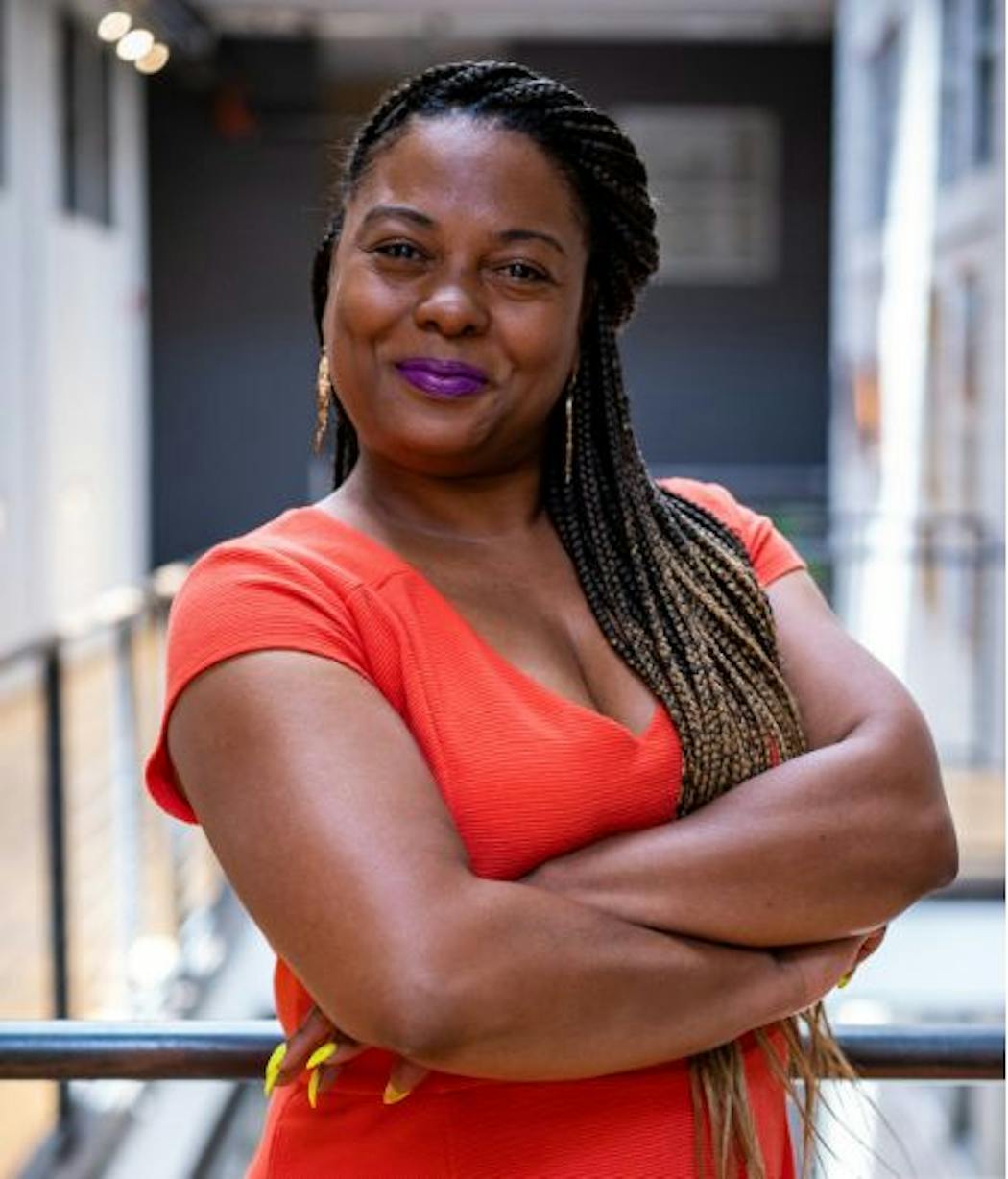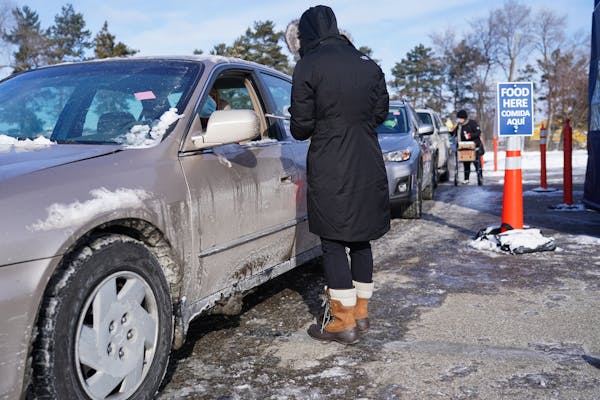"You have no idea how good you have it."
"Lots of kids would love to walk a day in your shoes."
"You should be grateful you have never had to miss a meal."
How many times have parents uttered or privately thought these lines while addressing their children who are blissfully unaware of their privilege?
None of us set out to raise spoiled, entitled humans. One popular antidote, especially around the holidays, is exposing them to hardship. Volunteering at a soup kitchen or a food shelf can broaden their perspectives while teaching them to be thankful for the lives they have. But these motivations seem fraught to me, and I've wrestled with how to nurture volunteerism in my own young kids without projecting tired narratives.
I reached out to Niila Hebert, a leader in community building, who acknowledged that she was also working to foster what she calls "a service heart" in her 14-year-old son.
"His passion or interest in thinking outside of himself as an individual hasn't really developed," Hebert told me.
And what is a service heart?
"Having a service heart is less about showing our kids to be 'saviors' for those who are less fortunate," she explained. "It's instead helping them harness an awareness of how to step in and help another person."
Hebert is no stranger to service. She managed volunteer relations for Girl Scouts River Valleys and is currently vice president of network alignment with the African American Leadership Forum. She's also on the board of the Minnesota Alliance for Volunteer Advancement (MAVA).
She remembers it being an easy lift to teach her daughter, now 21, to look out for others. As a troop leader, Hebert took her kids to drop off donations at food shelves and blankets at emergency housing shelters. Even as a young teen, her daughter, without prompting, took it upon herself to pick up trash in neighborhood parks or help an older neighbor shovel her driveway. The impetus was never, "Let's go help these poor people," but rather, "How can I make the world a better place?"
Hebert says it's important to interrogate one's motivations behind volunteering.
"Is it to make you feel better? Is it to say, 'I was in a space with people of color, and I helped this family get access to food because they live in a really poor neighborhood'?" she says. "Or is it more so that you want to be better connected to your community?"
If you're signing up your family for a shift at a food shelf to teach your children "to be grateful when they see people who are less fortunate, that is the wrong reason," said Karmit Bulman, MAVA's executive director. "Spend some time reflecting why it's important to take care of your community. Look at this world and all the things that are wrong, and all the people who've made it better. Minnesotans want to take care of their community and their world. That's the right reason."
My point is not to discourage anyone with less than pure intentions from volunteering, as it is still the case that many hands make light work. Organizations need more doers. But seeing people only in the context of their perceived deficiencies blinds us to their gifts and can widen the gulf between us and them. If we can reframe the why behind community service, it can make our journey more rewarding and intentional, and even prevent harm.
Bulman told me a story about volunteers running out of plates at a soup kitchen, so they sloshed the food into plastic bags and served the meals that way. Would you expect a friend who came to your home for dinner to eat the way you might feed a dog? "That's just horrible," she says. "If you come from an intention of people are less than you are, and you're there to help them, you're going to say and do inappropriate things."
Like parent, like kid
Like just about everything with parenting, the best way to build a community-minded child is to model that behavior ourselves.
Roslyn Harmon remembers first helping feed meals at People Serving People when she was about 17, and her brother was 7. Her parents went in with the notion of, "They're family," recalls Harmon, executive director of the Dispute Resolution Center in St. Paul. "We were taught, 'This is community. This is what community does to help community.' "
Harmon said her parents routinely exposed her to volunteering and taught her that giving back is simply a matter of extending your hand to someone who needs it. "Don't look at it as people having less, but how you can be a gift to what they need," she said.
Build enthusiasm
Consider helping your children work their way up to direct service. A young child enlisted to feed turkey dinners to the homeless might be overwhelmed by the volume of people who need meals. Hebert suggests starting kids off with "soft touches" of service, such as collecting items for a coat drive. Have conversations with them about what to expect, why you're volunteering, and how things went. "It's building up their emotional muscle," she said.
She cherishes the memory of accompanying her children as they knocked on neighbors' doors and asked for items that they could bring to the food shelf. "When we got back to our home, and we saw the little red wagon filled with all of these different canned goods, they felt a level of accomplishment," she said. "That's something you can do with kindergartners."
Think broadly
What does your child like to do? It doesn't have to be helping people in need. Maybe they enjoy attending high school football games or children's plays. Could they work the concession stands or become an usher? "Start there," Hebert says. "It can start with just saying, 'I love being in this place and doing this thing.' "
Tap into their personal gifts, whether it's art, cooking, or music. "We want being kind not to be something we have to do, but something we want to do," Harmon said. "If your child wants to bake cookies, that's a great way of paying it forward."
Build relationships
MiaLisa Millares, executive director of the Minnesota-based national nonprofit Doing Good Together, said some of the most meaningful volunteer moments she's shared with her daughter have been during visits to a nursing home. "There's so much learning that can be had by listening to our elders, and so much learning that can be had by listening to our children," she said. "It's hard to tell who is the giver and who is the receiver in that situation. Everyone has something to give."
If you're looking for volunteering ideas in the Twin Cities, sign up to receive regular listings from Millares' organization (bit.ly/3iAgaSJ), which has researched family-friendly opportunities. Go to doinggoodtogether.org for more ideas on teaching kids the values of kindness and gratitude.
Embrace the happy
Helping others is proven to make you happier. Feeling better about yourself shouldn't be the primary reason to lend a hand, but it's a likely outcome. So embrace the good vibes. After all, your child is thinking more deeply about what they can do to shape their community into a better place.
"Building that service heart," Hebert said, "will transcend into doing bigger and better things."

Your fridge is a place where fresh food goes to die. That doesn't have to happen.

Yuen: Parents, let's make a pact to get our kids off their screens and back to real-life play

Yuen: He donated his sperm to friends. Now he wants to be dad to the 5-year-old.

Yuen: This Minnesota man has written thousands of poems over more than a decade — all to his wife




